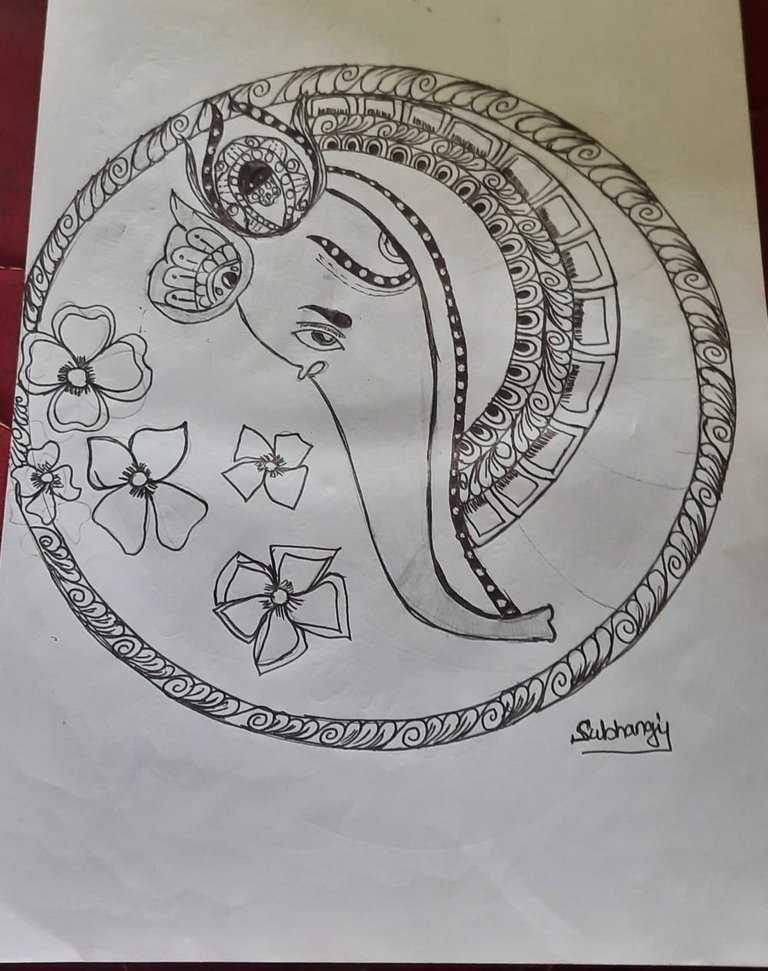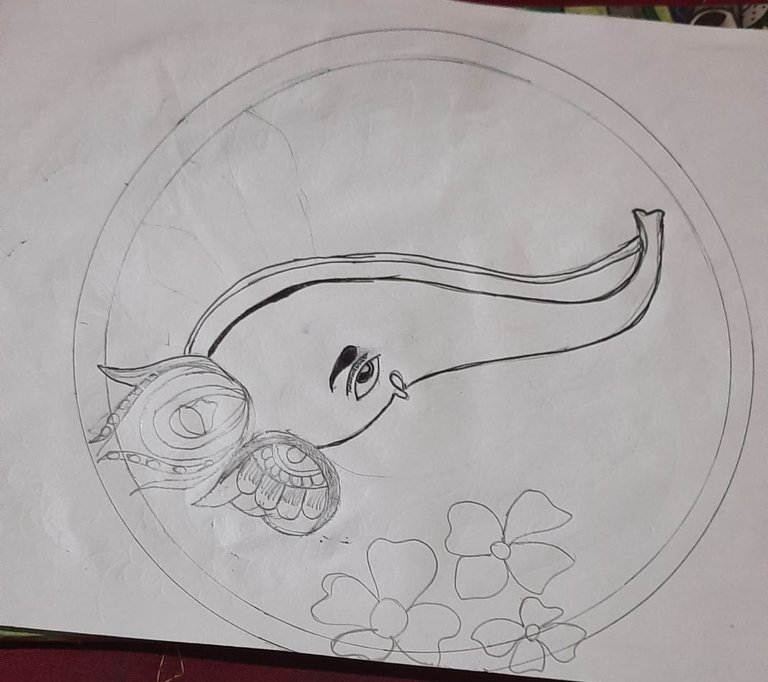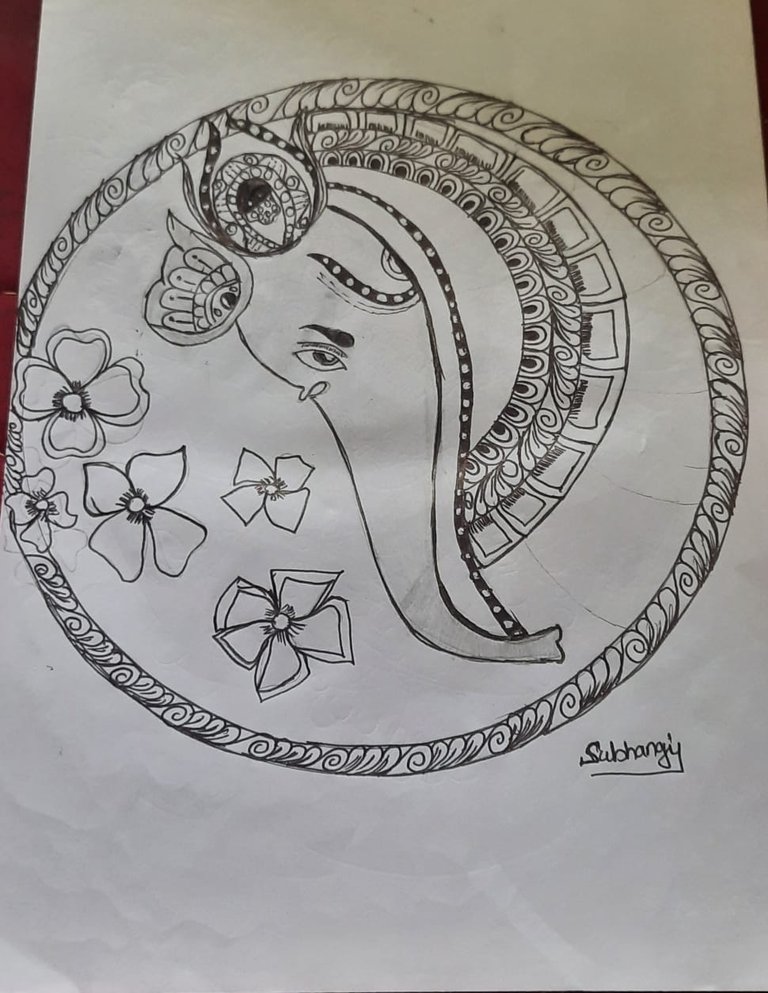
HI,
Today's blog post will feature a recent black-and-white drawing I did of mandala art of ganesha idol.
The formless Divinity, for the benefit of the devotee, has taken on the majestic form of Ganesha. He is the son of Lord Shiva and Goddess Parvati, according to Hindu mythology.
The Meaning of Ganesh
The group is gan. A collection of atoms with varying energies make up the universe. If there were no supreme law guiding these various groups of things, our universe would be in anarchy.
Ganesha is the lord of all these atomic and energetic groupings.
He is the almighty mind that unites everything and establishes the order in the cosmos.

The Essence of Lord Ganesha
Adi Shankara does a wonderful job of capturing the essence of Ganesha.
Ganesha is revered as the elephant-headed deity, yet the shape (Swaroop) only serves to highlight the formless (parabrahma Roopa).
"Ajam Nirvikalpam Niraakaaramekam" is his name. This suggests that Ganesha represents the omnipresent consciousness and is Ajam (unborn), Nirvikalpa (attributeless), and Niraakaar (formless).
The energy that created the universe is represented by Ganesha. It is the energy into which everything will dissolve and from which everything manifests.
The birth of Ganesha
One day, Goddess Parvati was getting ready for a bath at her residence on Mount Kailash. She sent Nandi, her husband Shiva's Bull, to defend the door and prevent anyone from entering because she didn't want to be bothered. Intentionally accepting his position, Nandi promised to carry out Parvati's instructions. But because Nandi was first and foremost loyal to Shiva, he had to let him in when Shiva arrived home and understandably wanted to enter. Even more than this disrespect, Parvati was enraged by the fact that she lacked a companion as devoted to her as Nandi was to Shiva. She then made Ganesha by reanimating the turmeric paste (used for washing) from her body and claiming him to be her own devoted son.
The following time Parvati wanted to take a shower, she assigned Ganesha to stand to watch at the entrance. Shiva eventually returned home, only to be told he couldn't get inside by this odd boy! Shiva was enraged and sent his army to kill the youngster, but they all failed! Being the son of Devi, Ganesha possessed such power.
Shiva was shocked by this. As soon as Shiva saw this was no ordinary youngster, he chose to engage in combat. In his holy rage, he removed Ganesha's head, instantly killing him. This infuriated and offended Parvati to the point where she made the decision to wipe out the entire Creation. Being the Creator, Lord Brahma naturally had concerns about this and begged her to rethink her extreme idea. She promised to do so, but only if two requirements were fulfilled: first, Ganesha had to be revived; and second, he had to be worshipped above all other deities continuously.
Shiva accepted Parvati's demands when he had calmed down and realized his error. He dispatched Brahma with the directive to bring back the head of the first animal he crosses whose head is lying northward. Shiva then adorned Ganesha with the head of a sturdy and mighty elephant when Brahma soon returned. Ganesha was given fresh life by the god, who then claimed him as his own son and elevated him to the position of supreme god and head of all ganas (classes of beings), Ganapati.
Symbolism and Significance of Ganesha
The large belly of Ganesha stands for absolute acceptance and kindness.
Ganesha's raised hand represents security. His lowered hand, with the palm facing outward, conveys the message, "Fear not, I am with you," and it also serves as an invitation to kneel down. This also represents the fact that one day, we will all vanish into the earth.
The single tusk on Ganesha represents one-pointedness. Even the tools that Ganesha uses have meaning.
He holds the "Ankusa," which denotes awakening, and the "Paasa" (signifying control). A great deal of energy is unleashed upon awakening, and if not properly controlled, it can become chaotic.
Does the elephant-headed God Ganesha ride a mouse-sized creature? Isn't that so contradictory? Again, there is profound symbolism. Ropes that bind are cut and nibbled upon by the mouse. The mouse is comparable to a mantra that may break through countless layers of ignorance to reveal the supreme knowledge symbolized by Ganesha.
Because words change over time but symbols don't, our ancient Rishis were so highly educated that they choose to express Divinity using symbols rather than words.
As we experience the omnipresence in the shape of the elephant God, let us keep the deep symbolism in mind while remaining fully conscious that Ganesha is very much within us. We should keep this knowledge in mind when we observe Ganesh Chaturti.
So, following some work, this is the outcome.
